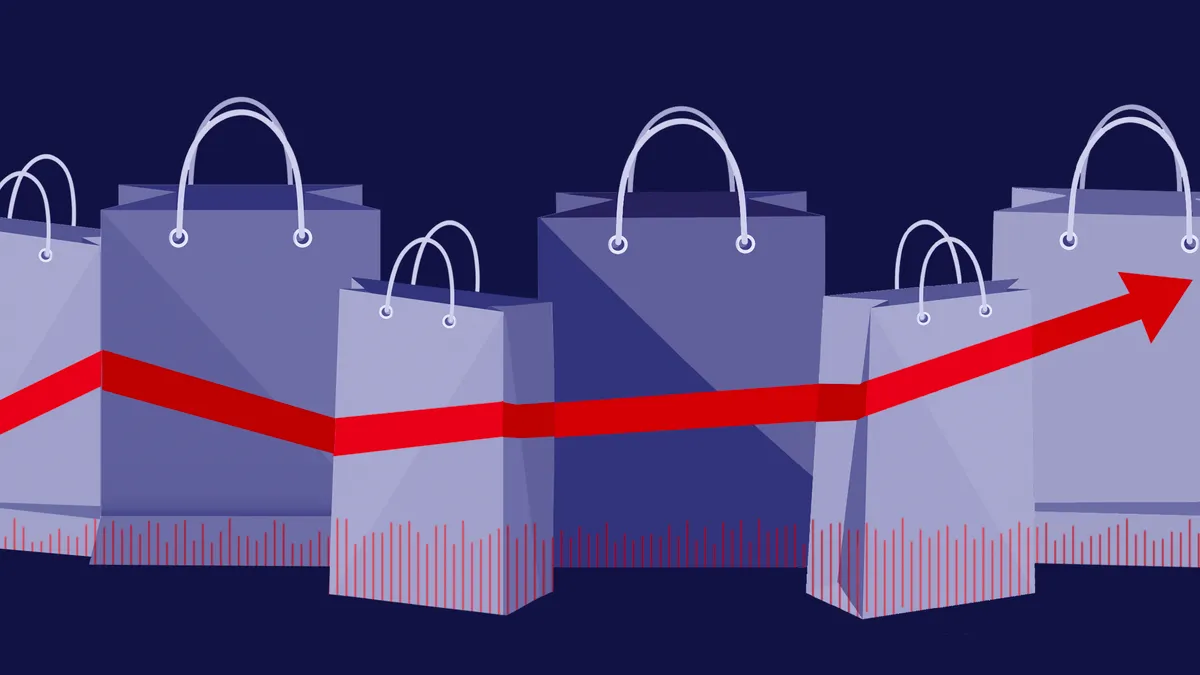Dive Brief:
-
Some 3.5% of retail holiday returns this year will be fraudulent, up from 3% last year, according to the National Retail Federation. That is expected to cost retailers $2.2 billion, up from some $1.9 billion last year. E-commerce has an advantage in this area, with just 1% of web purchases returned to stores suspected to be fraudulent.
-
Returns in general, which are 8% of purchases overall and could get worse for e-commerce considering that shoppers don’t touch and feel the items ahead of time, accounted for some $248 billion lost in 2014.
-
But that could be seen as investment by retailers, reports the Washington Post, considering evidence from the University of Texas-Dallas that shows that lenient return policies encourage returns, and in many cases also encourage further purchases.
Dive Insight:
Because of the cost of returns, especially fraudulent ones, some retailers are getting tougher by shortening the time customers can return anything, usually within 30 to 90 days, requiring tags, receipts, and identification, limiting customers to a certain number of returns, asking for reasons for the return, and imposing other conditions.
But a retailer's return policy is not just a numbers game. It's a complex formula that must take into account a retailer's brand, its relationship with its customers, and the psychology behind returns.
That’s evident in the research from UT-Dallas, a meta-analysis of 21 research studies. Lenient return policies can lead to losses or more purchases, and sometimes it depends on what is being returned, the researchers found, according to the Post.
That has led the UT researchers to suggest that some retailers could find it useful to have different return policies for different items, depending on what the loss-purchase potential is.
“Depending on whether it’s a durable good or a consumable good, whether it’s high-fashion or fast-fashion, those different segments of the market have different reasons for buying and they have different concerns for risk and quality,” UT-Dallas researcher Ryan Freling told the Post.
Nordstrom, one retailer famous for its liberal return policy, still maintains a system of considering returns on a case by case basis, something that at times, for some customers, is an invitation to attempt returns of years-worn merchandise. Even then, the company says, it aims to find a solution in every case, with the goal of “taking care of the customer.”
When liberal return policies are part of a retailer's commitment to its brand, it can take steps to minimize their costs. For e-retailers like Zappos.com, for example, returns are not just part of a customer service policy — they're actually baked into the sales strategy. With free shipping and free returns, Zappos expects its customers to shop freely without necessarily committing to the purchase.
Making returns easy allows the company to compete with physical stores, where customers can try on shoes and apparel before they buy anything, so Zappos considers the policy a marketing expense rather than an inefficiency. To minimize the inevitable extra shipping costs, Zappos uses warehouses close to its shippers and offers rush shipping for purchases only, not for returns.
Meanwhile, working with customers to help them choose the right item in the first place can also cut down on returns. In store, that means giving customers attention, helping them find the right size, and being honest when clothing or any other item doesn't quite work for them. Rue La La, an e-retailer that like Zappos spends a lot of money on returns, has leveraged information about its customers' orders to help cut down on changes of mind that lead to them. The company tested a system that gives customers information about past purchases so that next time they’re more likely to make a purchase that will stick. If a customer consistently returns items that are too small, the program pops a question the next time the customer chooses that size, suggesting a larger one instead.









